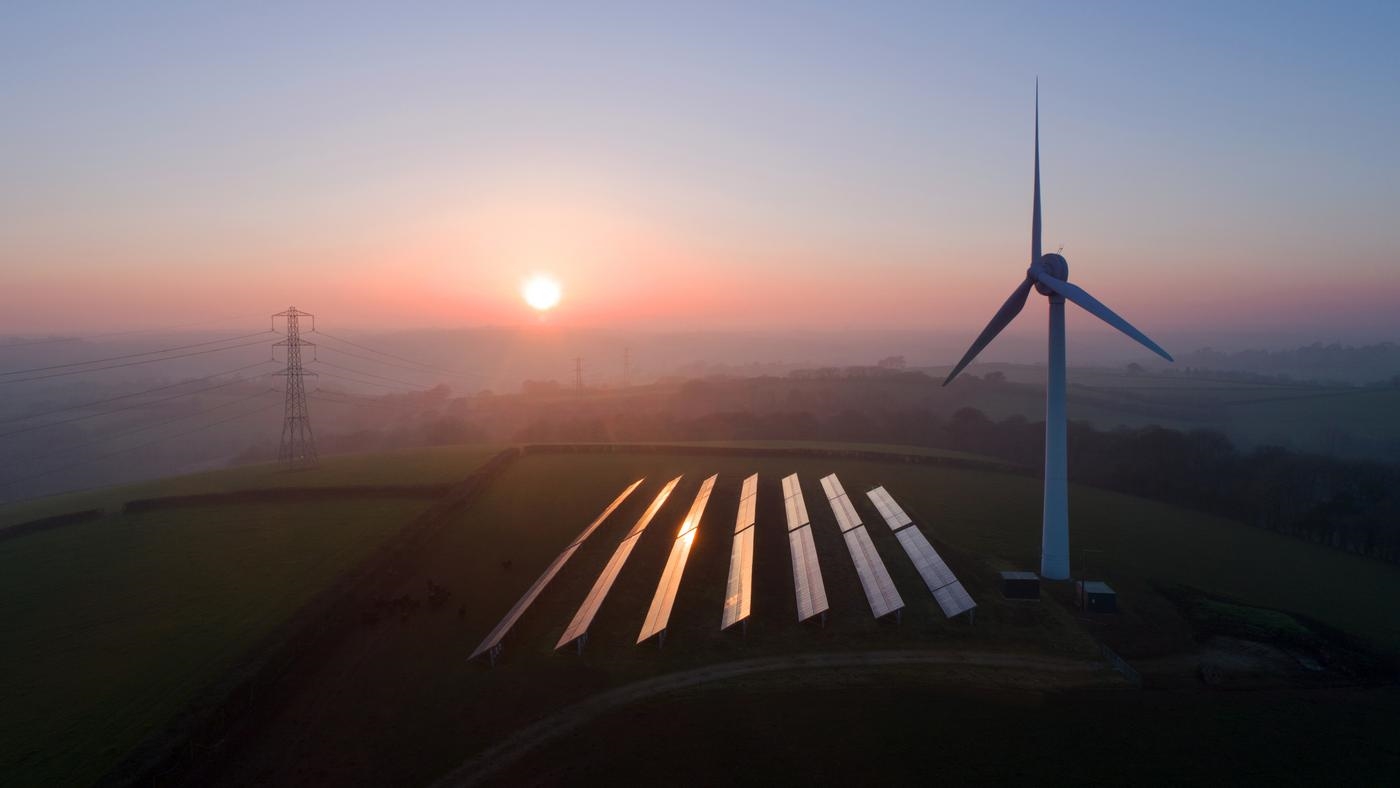Get Ed Crooks' Energy Pulse in your inbox every week
The all-electric movement goes to war against gas
About two dozen US cities and towns have passed laws seeking to restrict gas connections in homes and offices. What effect will they have on future demand?
1 minute read
Ed Crooks
Vice Chair Americas and host of Energy Gang podcast

Ed Crooks
Vice Chair Americas and host of Energy Gang podcast
Ed examines the forces shaping the energy industry globally.
View Ed Crooks's full profileIn the 1950s, the all-electric home looked like the future. A house fitted out by Kansas City Power & Light in Shawnee, Kansas, in 1954 became famous for offering every possible modern convenience, including a concealed television, automatic curtain rails, a cooker and a heat pump, all electric. The gas industry put up strong competition, however, and was highly successful in retaining its place in American homes. US residential natural gas consumption rose eight-fold from 1945 to 1972, reaching 5.1 trillion cubic feet that year, and it has stayed around that level ever since.
Now, however, the role of gas in domestic heating and cooking is again under threat. About two dozen American towns and cities, mostly in California, have put in place regulations that ban or discourage gas connections being installed in new homes and offices. Berkeley was the first city to impose a ban, quickly followed by others including San Jose, and San Francisco is expected to join them this year. Cities and towns in other parts of the US, including Massachusetts and Washington state, are also looking at the idea.
The logic behind what the New York Times has described as the “all-electric movement” is that hopes of steep reductions in greenhouse gas emissions rely on electrification. Most power in the US still comes from fossil fuels, but in the future renewable energy or plants with carbon capture could provide entirely carbon-free electricity. To many environmental campaigners that looks like a more realistic route to lower emissions than trying to limit the carbon footprint of gas cookers and boilers.
Support for electrification also aligns with the opposition to new pipelines that is active in many parts of the US. For example, the Financial Times reported last year on a new apartment block in Brooklyn that was being fitted with electric heating powered by a diesel generator, after the state refused a permit for a new pipeline to increase gas supplies from Pennsylvania to New York.
The gas industry is trying to resist this pressure. The American Gas Association, which represents natural gas distribution companies and others in the industry, last month launched a position statement on climate change, arguing that “natural gas utilities are committed to doing their part” to reduce emissions. Its linked think-tank, the American Gas Foundation, has published studies looking at the potential for using new space and water heating technologies and gas from renewable sources such as municipal waste to cut emissions. It is also highlighting the potential for curbing methane leakage along the gas delivery chain, further reducing the industry’s carbon footprint.
The foundation argues that gas can be much more cost-effective for some uses than all-electric solutions, “which may be technically feasible but are much costlier and can require vast amounts of new infrastructure”.
Beyond any policy debates, however, the gas industry’s strongest defence is the slow turnover of the housing stock. Globally, two-thirds of the building area that is in use today is expected to be still in use in 2050. Wood Mackenzie’s forecasts for US gas demand do not show much of an impact from electrification: residential consumption is expected to be the same in 2040 as it was in 2018. If the all-electric movement continues to gain momentum, however, that forecast could face downside risks.
The OPEC+ group debates its response to the coronavirus
As the new coronavirus originating in China has spread, and its economic impact has grown, it has become increasingly clear that it will have a significant impact on demand for oil this year. The Joint Technical Committee, which advises the OPEC+ group of OPEC and its allies, including Russia, met for three days this week, and reportedly recommended a further production cut of up to 600,000 barrels per day. However, this advice has not yet been adopted, with Russia needing more time to analyse the market and decide on its position.
The latest update from the World Health Organisation said 28,060 cases had been confirmed in China, with a further 216 in 24 other countries. 565 people had died, all but one of them in China. 18,450 of the confirmed cases and 352 of the deaths have been reported in the past week.
Measures to combat the spread of the virus, including flight suspensions and closures of factories and shops are having a significant impact on economic activity. However, the ultimate impact on oil demand is still highly uncertain. Wood Mackenzie analysts have revised down their forecast of oil demand in the first quarter by nearly 900,000 barrels per day, with most of that revision coming in China. The new forecast for China in the quarter is about 100,000 b/d lower than demand in the same period of 2019: the first such drop since 2009. Bloomberg and then the Financial Times, however, suggested the impact could be much greater. They reported that Chinese energy executives expected the country’s oil consumption to be about 3 million barrels per day lower this month than in February last year, a drop of about 25%.
Brian Gilvary, BP’s chief financial officer, said he thought the virus could cut 300,000-500,000 barrels per day from average global oil demand this year, slowing growth from 1.2 million b/d to 700,000-900,000 b/d.
Late on Thursday Brent crude was trading a little over US$55 a barrel, its lowest level since the beginning of 2019.
Meanwhile, liquefied natural gas prices have also been slumping. Spot prices in Asia dropped to record lows at around US$3 per million British thermal units this week. Bloomberg reported that Total and Royal Dutch Shell had rejected claims of force majeure from CNOOC, which has been seeking to avoid LNG delivery obligations under long-term contracts.
News from Big Oil and Big Wind
After what was generally a tough set of earnings reports from Shell, ExxonMobil and Chevron last week, there was somewhat better news from BP and Total, which reported earnings above analysts’ expectations.
BP’s underlying net profit for 2019, excluding one-off items, was down 21% at US$10 billion, while Total’s was down 13% at US$11.8 billion, but both numbers were stronger than the consensus forecast. BP announced a 2.4% increase in its quarterly dividend, while Total confirmed the 6% increase it announced last year.
Equinor also raised its quarterly dividend, by 4%, when it reported results for 2019 on Thursday. Earnings were US$13.5 billion for the year, down 25% after adjustments for the adoption of a new accounting standard for leases.
Along with its earnings, Equinor unveiled a pledge to cut the carbon intensity of the energy it produces in half by 2050. The commitment covers the Scope 3 emissions that include carbon released when the company’s products are used, bringing Equinor in line with Shell and Total, which have similar ambitions.
One way Equinor aims to achieve that goal is by becoming a “global offshore wind major”, the company’s Sebastian Bringsværd told Greentech Media. The cost of floating offshore wind projects is falling rapidly, he said, making it realistic to think that large-scale projects with a capacity of 500 megawatts or higher could be viable. The aspiration echoes the ambition of another Scandinavian energy group: Henrik Poulsen, chief executive of Orsted of Denmark, told the Financial Times he wanted the company to be the world’s first “green energy supermajor”.
ExxonMobil and Chevron had also reported declining earnings for 2019, hit by weak commodity prices and a squeeze on downstream margins. Chevron nevertheless raised its dividend by 8.4% last week, saying its strong cash flows made it possible to increase the payout while continuing share buybacks at the rate of US$5 billion a year. ExxonMobil did not raise its dividend this time round, but traditionally moves in the second quarter.
For the next five years or so, the outlook for both companies will be heavily influenced by their ambitious investment programmes in the Permian Basin of Texas and New Mexico. WoodMac’s Matt Woodson took at a look at their progress so far, and concluded that for both companies the Permian was a relatively bright spot in what had generally been a challenging year. However, he added, 2020 looked like being “a key year for both companies to demonstrate that they can achieve their ambitious growth targets and the viability of their factory-style development programs”.
A mild winter hurts gas and coal in the US
The warm winter in the US so far this year has crushed natural gas prices, pushing the Henry Hub benchmark below US$2 per million British thermal units. Weak prices are putting pressure on gas companies — as reflected in S&P’s decision to downgrade the credit ratings of six Appalachian producers on Monday — and also having a big impact on the coal industry. Coal-fired plants provided just 18% of the power supply for the Lower 48 states in the seven days to 4 February, John Kemp of Reuters reported. Wood Mackenzie analysts expect demand from gas-fired power plants in the Lower 48 to hit another new record this year at 32.36 billion cubic feet per day, up about 5% from 2019.
The longer-term future for coal in the US does not offer much hope for improvement. In December Wood Mackenzie forecast that the US share of power generation would drop from about 27% last year to just 7% in 2040. Sammy Roth of the Los Angeles Times reported on how the first month of the 2020s had “landed like a sledgehammer” on the coal-fired power producers of the western US, with five more plant closures announced or brought forward in Montana, Arizona and New Mexico. There are now just 20 coal plants in the west without retirement dates set.
In brief
The COP 25 climate conference in Madrid at the end of last year had a limited agenda but even so made little progress, putting even more pressure on the COP 26 summit in Glasgow in November. Governments around the world are supposed to present more ambitious national targets for curbing emissions, but most are already falling behind schedule. Adding to the tensions around the event, Boris Johnson last week sacked Claire O’Neill, the UK climate envoy who was coordinating the summit. Ms O’Neill this week wrote a letter to Johnson, warning that his government was “miles off track” from taking a lead at the talks, and urging him to “set a new global vision for climate recovery and build a new consensus for global climate action”.
Wind and solar power overtook coal as a source of electricity in the EU for the first time last year.
The dispute between the US government and the state of California over vehicle emissions and fuel economy standards has caused “chaos”, the Wall Street Journal reported.
Sales of gasoline, diesel and even hybrid cars would be banned in the UK from 2035, under plans set out by Boris Johnson this week.
Tesla’s shares had a wild week, rising a total of 48% in two days to their peak on Tuesday, and then dropping 27% between then and the close of trading on Wednesday. By Friday morning, they were up about 15% over the week, reflecting continuing excitement about the company’s prospects.
And finally: more on electric cars. The Super Bowl is a landmark event in American culture as much for all the rituals around it as for the football itself, and one of the most-discussed of those is the television adverts shown in the commercial breaks. As the New York Times noted, there were more commercials than ever before for electric vehicles, pointing to some kind of shift in the US car market. But there are questions about how many of these new EVs people will buy, in a market that is still dominated by Tesla.
Isabelle Kocher, chief executive of Engie, lost her job when the company’s board said it would not renew her mandate. She led the company into a radical shift towards renewable energy, but its financial performance has been disappointing. Engie’s shares, which were worth about $40 each in 2011, are at about US$17 today.
Other views
Simon Flowers — Future energy: green hydrogen
Gavin Thompson — Coronavirus and China’s jittery commodity markets
David Brown and Prakash Sharma — What would an accelerated global energy transition look like?
Gernot Wagner — Carbon taxes alone aren’t good climate policy
Jigar Shah — Uber and Lyft should electrify their fleets, before cities make them do it anyway
FT Lex — The $900 billion cost of stranded energy assets
Nick Butler — It is time to unlock the potential of hydrogen
Kate Burgess —Glencore’s dilemma on the road to a low-carbon future
Fatih Birol — The hard reality of coal’s role in global energy
Quote of the week
“Divestment is not an economic issue in terms of how it affects the oil companies. The economic impact is for the person who is dumping the stock. He is getting out of an industry that has been put on notice that they're going out of business. In the last 10 years, they're up 5% or 10% and the S&P 500 has tripled. It has been absolutely awful, and I am proud to say that for those 10 years I've been saying, ‘Don't buy oil stocks.’ Forget the ethics for a second. It's a bad economic idea.” — Jeremy Grantham, who made a billion dollars in fund management and now campaigns on climate change, explained why he thought oil companies should diversify to become broader energy providers.
Chart of the week
This comes from a recent report by Wood Mackenzie’s Alex Whitworth on power generation in the Asia-Pacific region. While generation has essentially flatlined in the US and the EU over the past decade, it has continued to soar in Asia. This year or next, electricity demand in the Asia-Pacific region is expected to exceed half the worldwide total. Most of the growth in generation has come from established sources: 80% of the increase has been in coal, gas, nuclear and hydro power. A critical question for the coming decade will be how far wind and solar power can continue to increase their market share and slow the growth of coal- and gas-fired plants.








